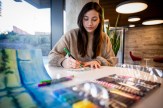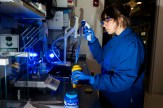New art exhibition on Northeastern’s Oakland campus explores California’s hidden histories
“Reshaping the Narrative: California Perspectives” includes over 50 sculptures, paintings, drawings and photographs, which will be on view through Nov. 24.
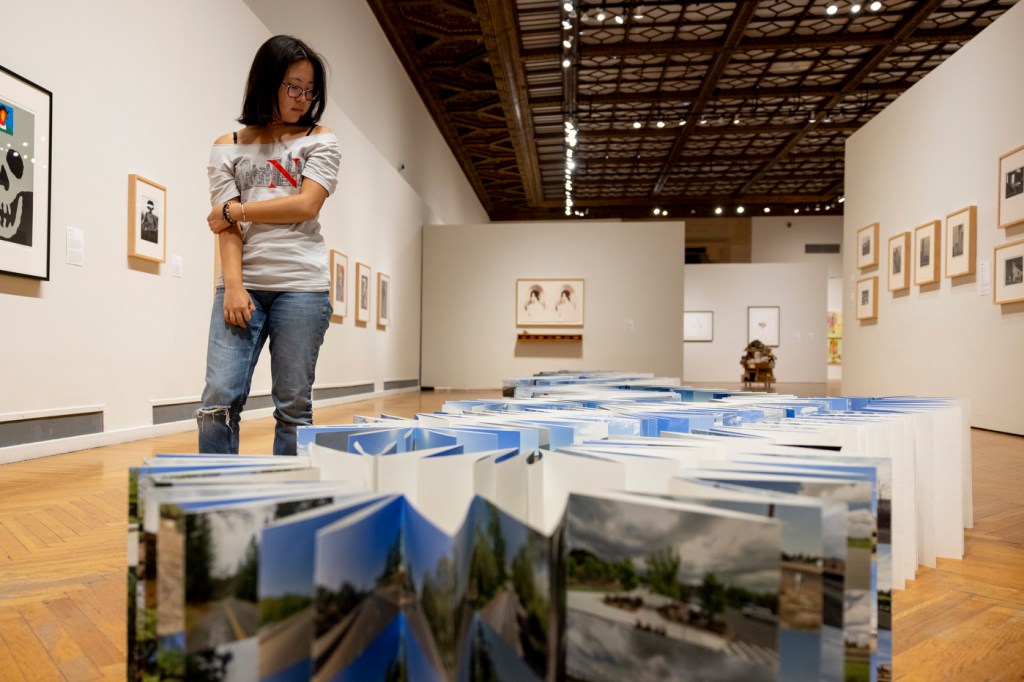
OAKLAND, Calif. — One of the first pieces you see when entering the Mills College Art Museum’s fall exhibition is a winding trail of large photos on the floor, seemingly mundane shots of dirt, trees and roadside shacks taken along the famous tracks of the Transcontinental Railroad.
Standing upright on accordion-folded poster board, some images are seen and some are hidden.
Which is kind of the point.
“What is visible or not visible to us from this viewpoint?” asked Weston Teruya, one of the featured artists of “Reshaping the Narrative: California Perspectives,” which includes over 50 sculptures, paintings, drawings and photographs, on view through Nov. 24 on Northeastern’s Oakland campus.
The exhibition is one of a handful of showcases the art museum curates each year, along with classes, workshops and events designed to enrich Northeastern students’ academic studies, a goal that has remained constant since the museum’s founding in 1925. The exhibitions are supported by the Susan L. Mills Art Gallery and Print collection endowments.
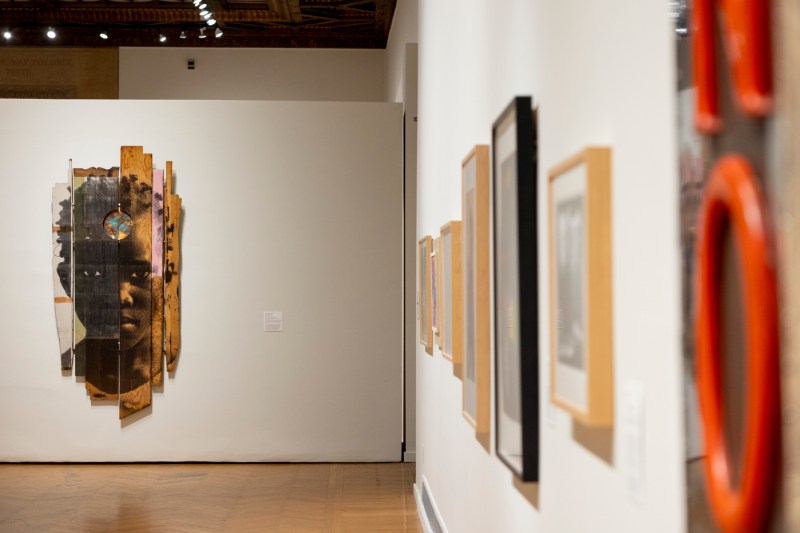
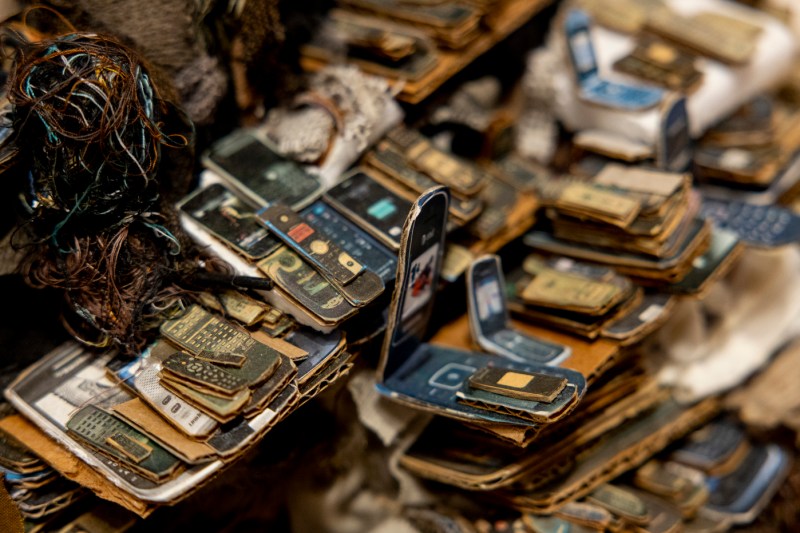
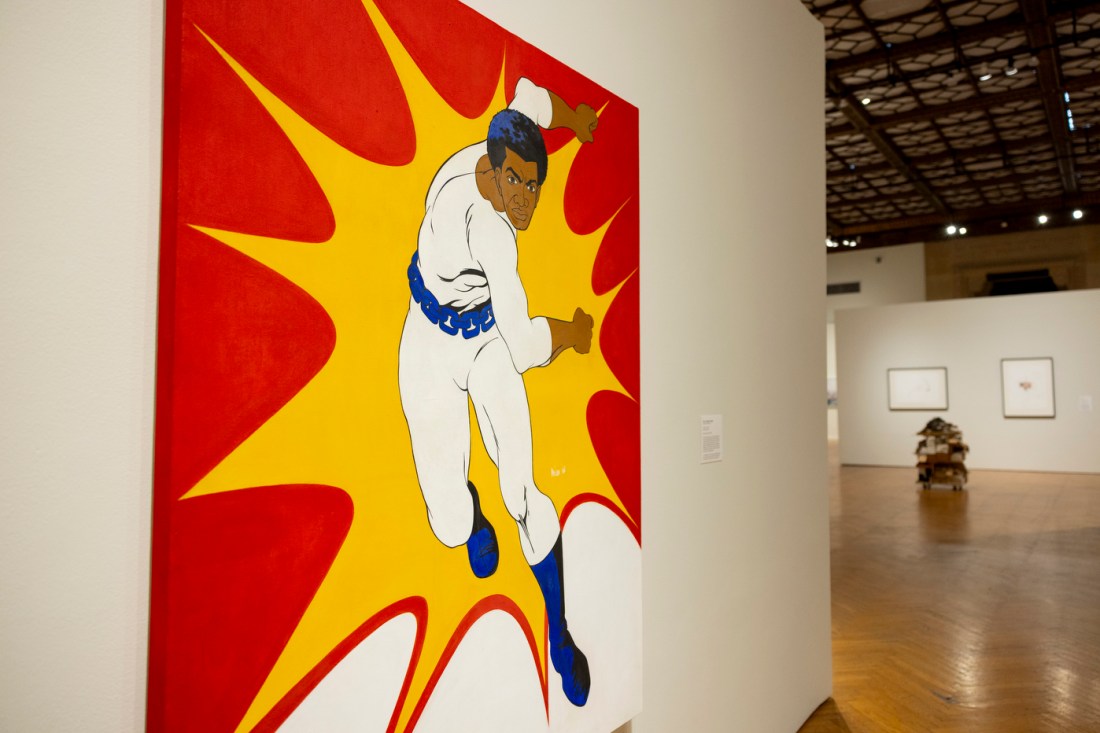
The museum also commissions contemporary artists, showcases student work and picks pieces from its on-site archive of over 12,000 objects, kept in three climate-controlled storage spaces in the back of the museum.
But it’s really all for the students.
“Because we’re an academic museum, and now that we’re part of Northeastern, it’s always about how we’re connecting with the residents and academics of the institution,” said Stephanie Hanor, director of the museum since 2009. “The students have insights into the pieces, and it’s really rewarding.”
The current exhibition is about the state of California, the parts you see and don’t see: from Hollywood, celebrity and conspicuous consumerism to its diverse population of Chinese, Black and Latin American immigrants who helped build its infrastructure and work its land but whose voices aren’t amplified in its cultural history.
Whether students are native to California — or new to the state — the artists and art chosen for the exhibit can be eye-opening to see who lived here, what they did, and how they impacted California today.
“We use our exhibitions to augment what students are learning here,” Hanor said.
For Northeastern’s student body, which is largely STEM-focused, the opportunity to consider these issues through the lens of art while studying science, technology, engineering and mathematics can strengthen critical thinking and communication skills vital to any industry, Hanor said.
“Artists make us see the world in different ways,” Hanor said. “Students don’t have to have experience with art to engage with it.”
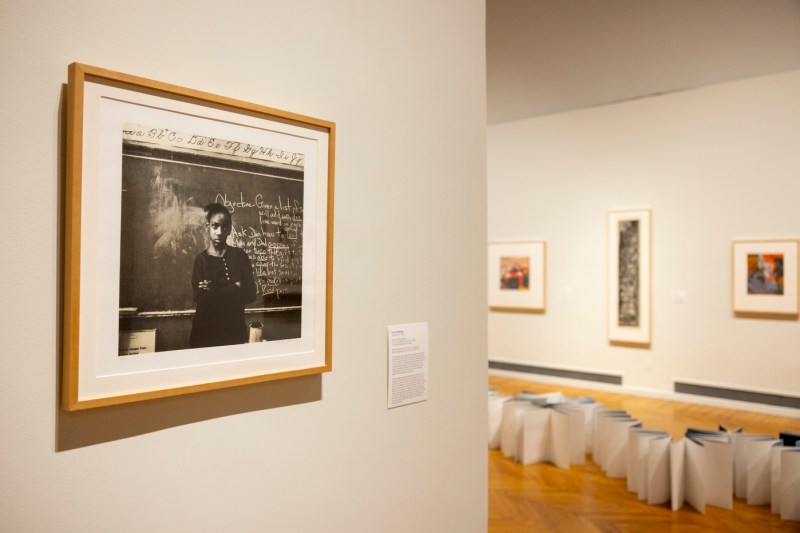
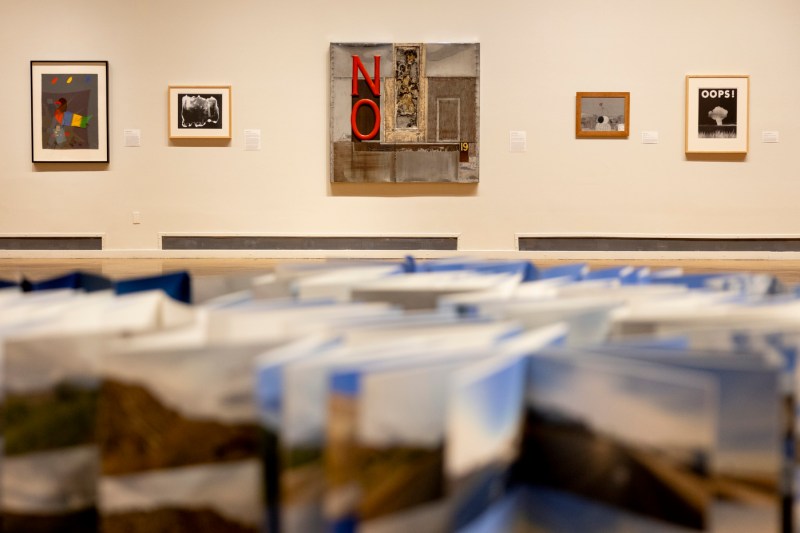
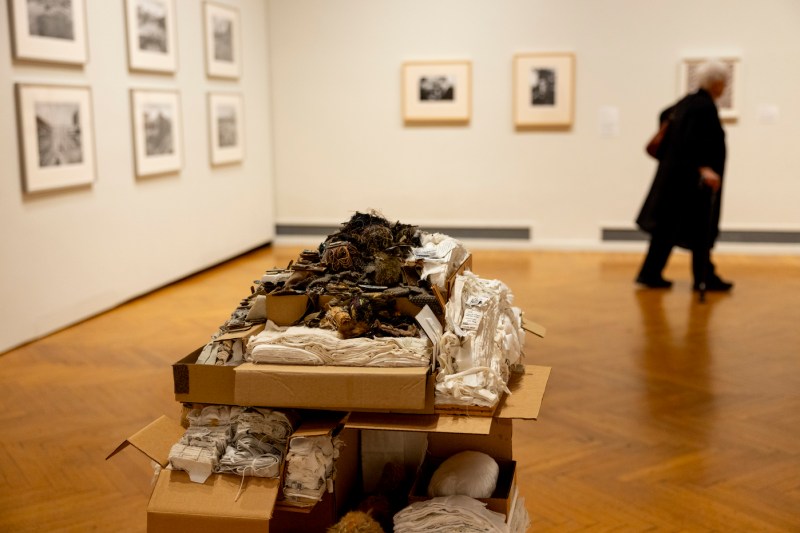
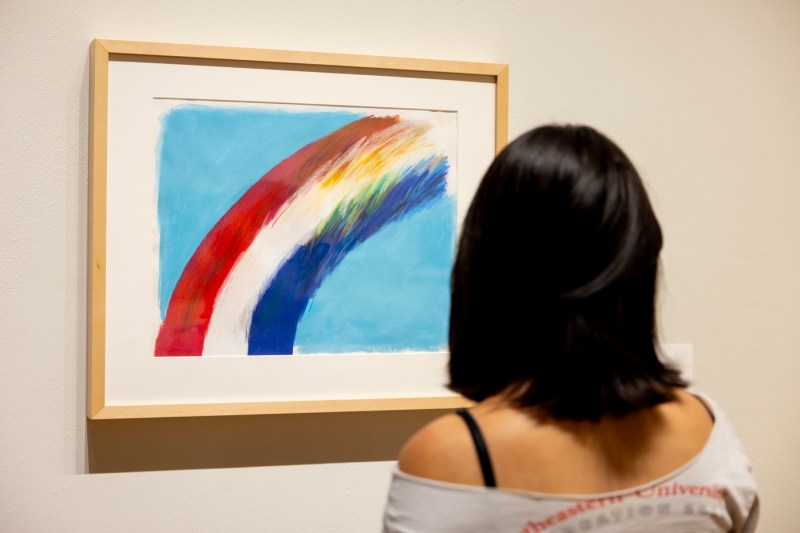
The art on display — ranging from photographs of San Francisco’s already-dense Sunset District in 1971 to a mixed-media collage made from detritus gathered at the site of the 1965 Los Angeles Watts riots — begs contemplation on issues like immigration, civil and reproductive rights, gentrification, gender identity, war and violence.
The big photographic sculpture that snakes along the museum’s wooden floor — titled “Who Else But Americans…” — is one such example. Co-created and installed by Teruya, a former artist in residence at the college, he composed the piece using three satellite-captured images for every two miles of railroad from Sacramento to Iowa, each photo symbolizing a Chinese immigrant laborer who died while building the tracks.
Whether each photo is visible or hidden, the person it represents is acknowledged for their contribution and sacrifice to an advancement in transportation that was touted as American exceptionalism in the late 1800s. Even if, in the pursuit of such exceptionalism, their lives seem forgotten.
“What do you think it means to create a work that is contending with content that is not necessarily visible on the surface?” Teruya said. “As a community, how do we remember and reckon with the ways that our social infrastructure has been shaped by a violence that is hidden away?”
Featured Posts
Hanor and faculty encourage student engagement with the museum by hosting monthly “art after dark” events that bring students together for art making, food and music. Hanor said students may come for the food and music, but they stay for the art.
“At last month’s event, about 60 students attended,” Hanor said. “This is a part of campus, and it’s here for them to enjoy.”
Stephanie Young, associate teaching professor in creative writing, collaborated with other first-year writing faculty and the museum to create a course for students to view art on display and write creatively about it.
“This collaboration will reach somewhere between 250 to 300 students on the Oakland campus this semester,” Young said. Later this semester, she noted, students can submit their writing to be considered for the Mills College Art Museum blog, Glass Cube.
Northeastern graduate student and gallery assistant Shih-Ju Fu has expanded her understanding of art sitting at the museum’s front desk — as well as her social circle. Though she no longer does much art herself, despite her bachelor’s degree in fine arts, she took the job to continue to have art in her life, and meeting other Northeastern students has been a definite perk.
“It’s an interesting job,” she said.
Fu was born in Taiwan, grew up in China and moved to New York in 2017 for school. She liked Northeastern’s Boston campus but wanted to try living on the West Coast in order to pursue a career in technology. The Oakland campus was perfect.
And how does she see California, both from her own experience and from the works on display in the museum? She likes the variety of artists chosen, from all different backgrounds, and how they all define California in their own ways.
“I like the California perspective, how they view California’s cultures and histories,” she said.
And though she doesn’t do much art herself, besides the occasional oil painting of her dog, which lives with her mom in China, a seemingly simple pencil sketch caught her eye, and she continues to ponder it.
“It looks really peaceful,” she said. “But when you look up close, you see how busy it is.”
The Mills College Art Museum is open and free to the public Tuesdays through Sundays 11 to 4, and Wednesdays 11 to 7:30.







